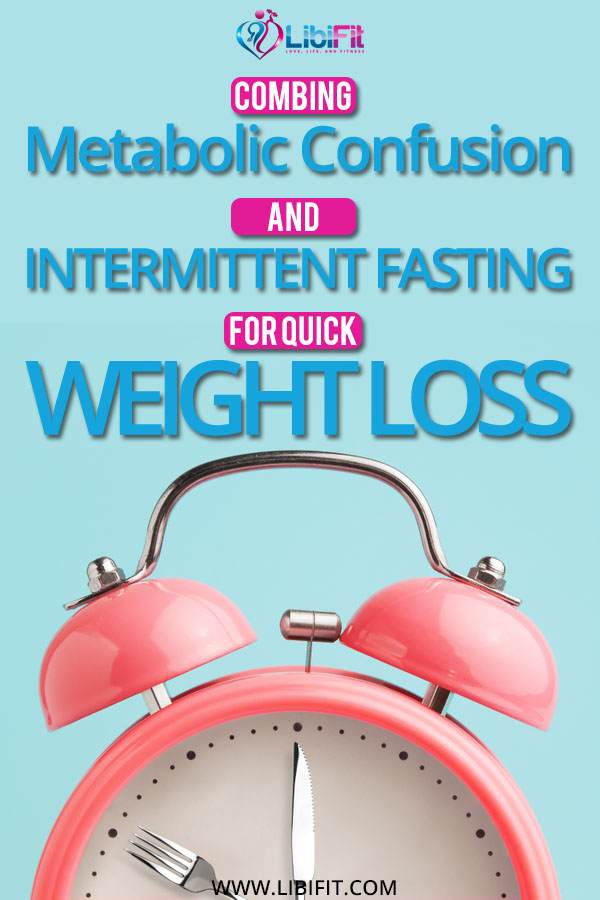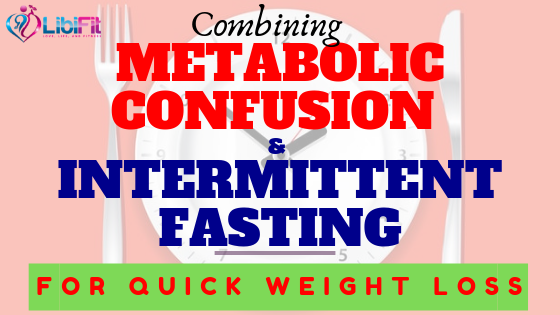Metabolic confusion has recently resurfaced in the fitness world as an amazing diet plan to lose weight and be healthy. The strategy includes cycling with your daily carb intake as well as the caloric intake. This cycle method has led to amazing results in most of the users.
More recently, this diet has been used in conjunction with intermittent fasting in order to speed weight loss and enhance fat burning. This has left many wondering how these diets work so well together and what more health benefits they can bring about. This article will help answer these questions in detail.
What is Metabolic Confusion
The term metabolic confusion has been circulating in the fitness world for some time now. With the continuous research in the fitness world and the emergence of keto, paleo, and other diets, the popularity of this metabolic confusion waned. However, it has still managed to hold its ground well because of its supreme effectiveness.
The main concept behind metabolic confusion and its high efficacy is quite simple. This diet requires you to eat your healthy selected meals such a way that you vary the total calories on some type of random schedule. For example, if you just had a meal with a caloric value of 500, the next meal must have a different number of calories.
Doing this creates a state of metabolic confusion in your body. Your body tries to adjust its functioning according to your method of eating and when there is no particular order detected, your body metabolism gets a boost. A change or response in body metabolism causes a greater fat loss without any serious food restriction.
Another reason metabolic confusion is popular among the fitness experts is its ability to help shed pounds irrespective of your body type. It even works great for endomorph body types which normally does not respond to most of the diet plans.
Metabolic Confusion Diet Strategies
Metabolic confusion can be induced in different ways. Here we detail two strategies: carb cycling and calorie cycling for facilitating metabolic confusion.
Carb Cycling
Carb cycling refers to a method in which you vary your calorie intake by limiting your carb intake on certain days and then eating normally the other days. With these alternating days of high-carb and low-carb days, dieters are able to follow carb cycling without any significant diet changes and burn maximum body fat.
The continuous cycling of carbs helps you maintain a caloric deficit which ultimately leads to weight loss without losing muscle mass. This is what makes carb cycling different than other low-carb diets. Another benefit of carb cycling is that it does not cause you to experience hormonal stress that normally accompanies the calorie restriction caused by most types of intensive meal plans.
Below is a simple sample calorie cycle to help you understand how to cycle carbs for weight loss.
| Monday | Moderate Carb Day | 100g – 125g of carbs |
| Tuesday – Saturday | Low Carb Days | Less than 50g of carbs |
| Sunday | High Carb Day | 200g – 225g of carbs |
The carb level variations are limitless. However, as a rule of thumb and to ensure weight loss follow these two guidelines:
- Do not have back-to-back high carb days
- The majority of the days of the week (at least 4) should be low carb days.
A major benefit of carb cycling is that it can be easily performed by people who are regular gym-goers who perform high-intensity exercises like weight training. Idealy, these dieters should have a carb-rich meal pre-workout so that they can exercise without any problem.
While you alternate between carb levels, it is important to maintain your protein intake, consume high-fiber food and eat healthy fats like olive oil.
Here is a great link to an article discussing the best foods for carb cycling.
Calorie Cycling
Another type of metabolic confusion diet is calorie cycling in which you vary your calorie intake by dividing your week into high and low-calorie days. In this method, you vary your total calorie intake on a weekly basis instead of carb intake.
For instance, if your daily calorie value in order to lose weight is around 1500 calories, you would normally eat 1500 calories daily. However, this is not the case when it comes to calorie cycling. In this type of metabolic confusion diet, you keep varying your daily calorie intake while making sure that your weekly intake remains constant.
If you need 1500 calories per day, your weekly calorie intake comes out to be 10500. This can be achieved through calorie cycling in many different ways. A popular way of doing it is observing 2 non-consecutive days per week as high-calorie days followed by the rest of the 5 days as low-calorie days. For example:
Monday: 1200 calories
Tuesday: 1250 calories
Wednesday: 1900 calories
Thursday: 1200 calories
Friday: 1850 calories
Saturday: 1200 calories
Sunday: 1900 calories
Total Weekly Calories: 10,500
Just as with carb cycling, the combinations for calorie intake are limitless within your target weekly calorie range. However, you should follow one of the same rules relative to carb cycling in that you should not have two high calorie days back-to-back.

Intermittent Fasting
Intermittent fasting (IF), another type of metabolic confusion, can be rightly called as a dieting pattern. It includes consciously skipping certain meals on a daily basis in order to burn fat without experiencing any side effects.
Intermittent fasting promotes the concept of fasting rather than feasting. It requires you to limit your calorie intake to a particular eating window and choose not to eat any food during the rest of the day. For more details, keep reading.
IF is comprised of an eating cycle which involves long periods of fasting followed by a brief eating period. Most proponents of IF have reported greater weight loss in a shorter amount of time. But how does this happen? How does fasting speed weight loss?
Intermittent fasting mostly works by decreasing the insulin levels in your body.
Your body normally breaks down carbs to form glucose which is then used by your cells for energy and fat storage. Insulin refers to a hormone that makes it possible for the cells to utilize glucose.
The levels of insulin tend to drop as soon as you stop consuming food. With no insulin in the body, the cells are unable to take up glucose and are forced to break down fat for energy. This leads to faster fat loss and better weight management.
Intermittent fasting can be done in several ways two of which are mentioned below.
16/8 Intermittent Fasting Method
The 16/8 method includes fasting for 16 hours followed by an 8-hour long eating window. You can do it as frequently as you can. Some people prefer doing it every single day, some repeat it once or twice a week, and some of them prefer doing alternate day fasting.
Here’s a sample approach to 16/8 intermittent fasting. You may have your dinner at 8 pm on Saturday and go to sleep. This is followed by getting up on Sunday, skipping breakfast, and not eating anything until 2 pm.
5:2 Intermittent Fasting Method
The 5:2 method, also known as the eat-stop-eat method is rather simple to understand. To follow this method, you need to observe 2 non-consecutive fasting days followed by 5 regular days.
This means that you would have to fast for 24 hours twice per week or reduce your calorie intake to as low as 500 calories in case of women and 600 in case of men.
You can choose any days for fasting as long as there is a non-fasting day between them.
Combining Intermittent Fasting and Metabolic Confusion
Both intermittent fasting and carb cycling are extremely powerful tools for fat loss individually. However, putting them together will help you achieve results that seemed impossible before.
Suppose you are fasting for 15 hours a day where you stop eating at 8 pm every night, skip breakfast the next day and have your meal at 11 am. To combine IF with metabolic confusion, you must break down your food into 4 meals and consume them within your eating window. For example, eat at 11 am, 2 pm, and 5 pm, followed by your last meal of the day at 7:30 pm. The cycle is then repeated every day.
Now, during your specified eating times, vary your carb intake daily. Experts recommend going for 4 zero-carb days, 2 moderate-carb days, and 1 high-carb day. Apply these carb rules to the 4 divided meals you eat during your eating window followed by a fasting period of 15 hours. Here is how a sample eating schedule may look.
| Day of the Week | Fasting Period | Carb Intake |
| Monday | 8PM – 11AM | Moderate: Divide carb intake of 125 grams over 4 meals |
| Tuesday – Saturday | 8PM – 11AM | Low: Divide carb intake of 50 grams over 4 meals |
| Sunday | 8PM – 11AM | High: Divide carb intake of 225 grams over 4 meals |
By doing this, you can enjoy the benefits of both IF and metabolic confusion together.
7 Benefits of Combining Metabolic Confusion and Intermittent Fasting
The health benefits of intermittent fasting are amazing. But if you combine it with metabolic confusion, they can exceed your expectations. The following results can be successfully obtained by the combination of two.
- Weight Loss: Combining metabolic confusion with IF produces a greater calorie deficit which ultimately leads to a better weight loss.
- Increased Fat Loss: Tricking your metabolism combined with long hours of fasting helps your body switch to fat burning in a much faster way. This leads to a greater and quicker fat loss.
- Muscle Recovery: People who normally complain about muscle loss due to IF can combine it with carb cycling to fuel the muscles and prevent them from depletion.
- Energy Enhancement: People who are unable to workout on IF can combine it with metabolic confusion to fuel their bodies with energy. This allows them to workout properly without feeling energy-depleted.
- Insulin Regulation: Intermittent fasting together with metabolic confusion like carb cycling can regulate your blood sugar by controlling the insulin spikes.
- Prevention of Diabetes: By providing better control of insulin and blood sugars, IF together with metabolic confusion can help fight medical conditions like type 2 diabetes. It can also help fight insulin resistance.
- Control of Inflammation: IF together with metabolic confusion can lead to better control on inflammation by controlling the sugars and processed food you eat.
Concluding Thoughts on Metabolic Confusion
Metabolic confusion diet has proven to be highly effective in healing your body and managing weight. Combining it (carb or calorie cycling) with IF provides both long and short-term benefits that can improve your health and positively impact the quality of living.










































